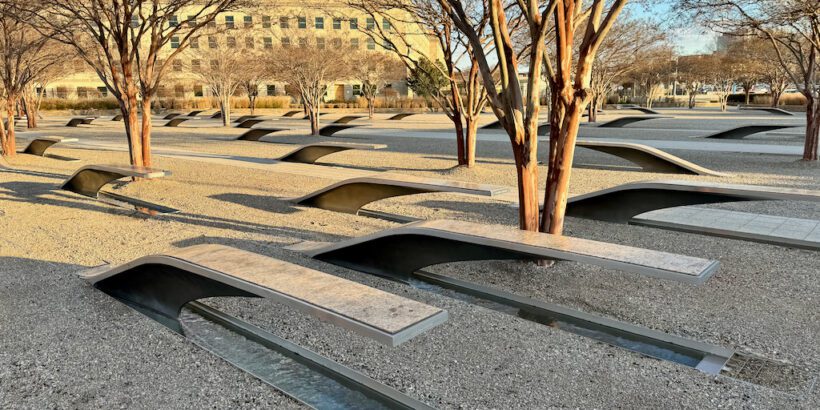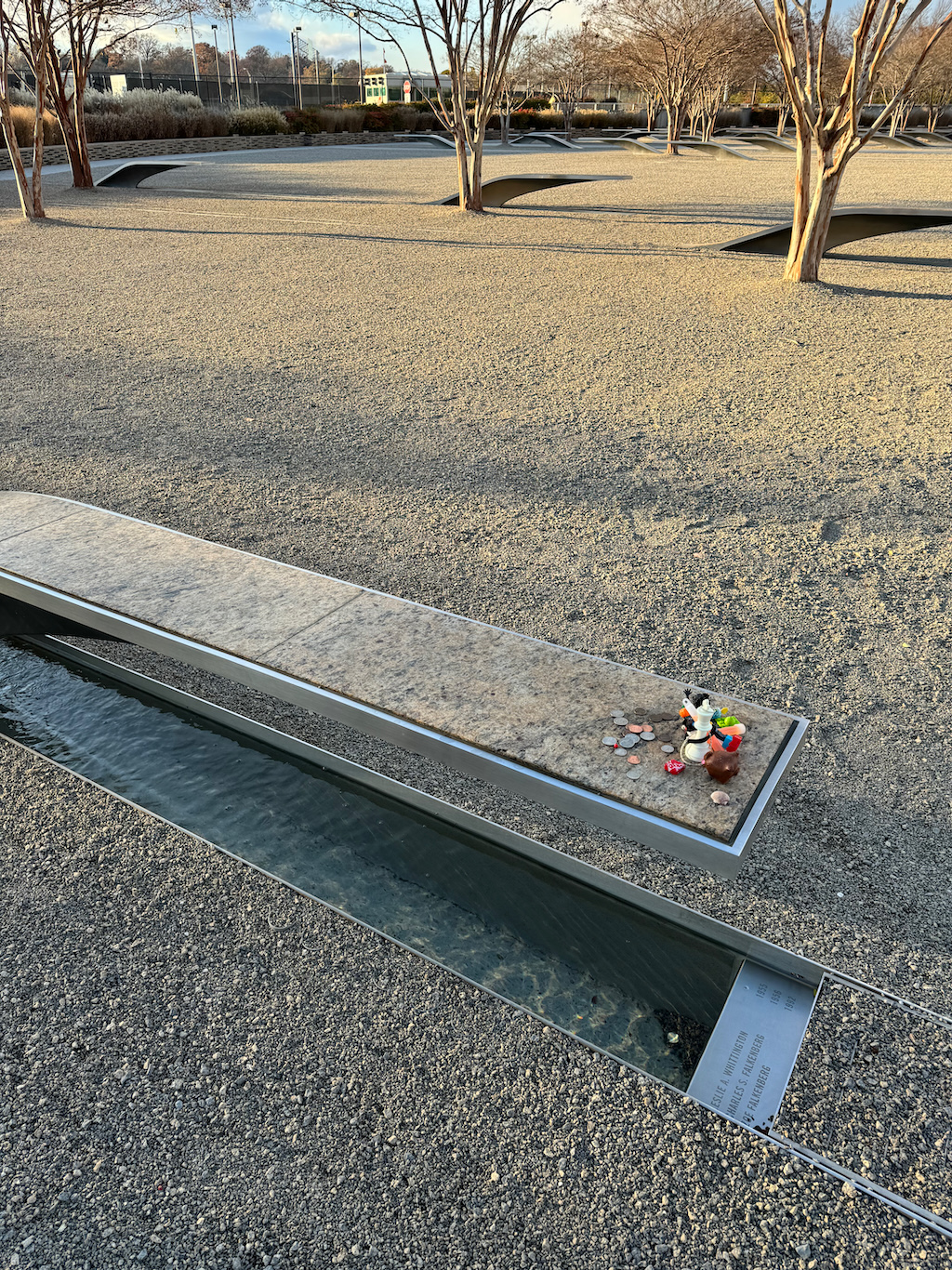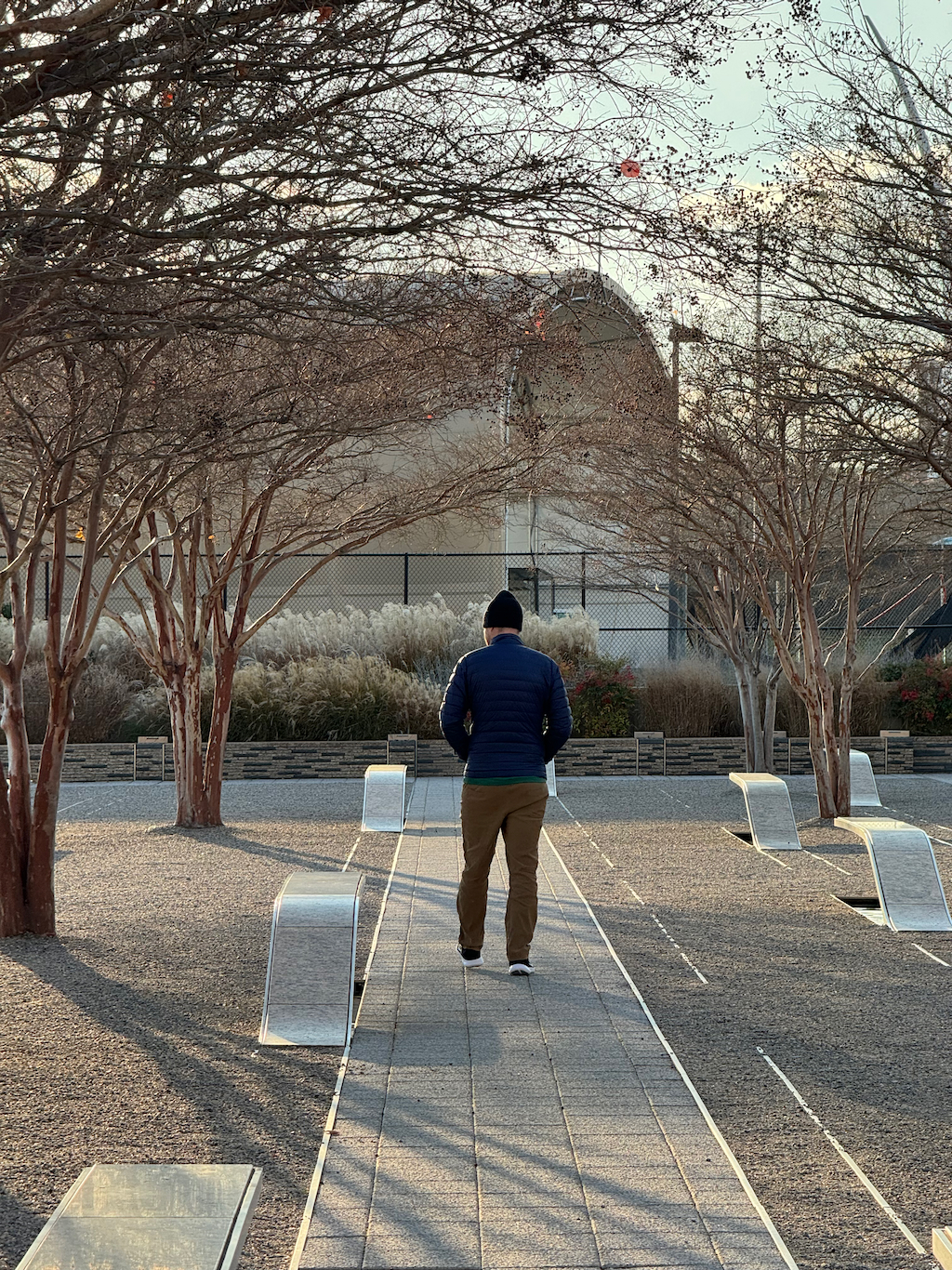The mention of September 11, 2001, inevitably stirs a complex mix of emotions. On our initial trip to Washington DC, we regrettably missed the Pentagon, so during our most recent visit, I made it a priority to rectify that and explore the site.
It was then that I stumbled upon the Pentagon Memorial, realizing that it was an imperative stop on our itinerary. The desire to pay homage to the events of that fateful day and the lives affected led us to the grounds of this memorial, and below I will tell you everything you need to know before making a visit.
Table of Contents
What is The Pentagon 9/11 Memorial?
The Pentagon 9/11 Memorial is a memorial dedicated to the 184 people who lost their lives during the terrorist attack on the Pentagon on September 11, 2001. It features 184 illuminated benches, each representing a victim, arranged by the birth year of the person and its located just outside of the Pentagon.
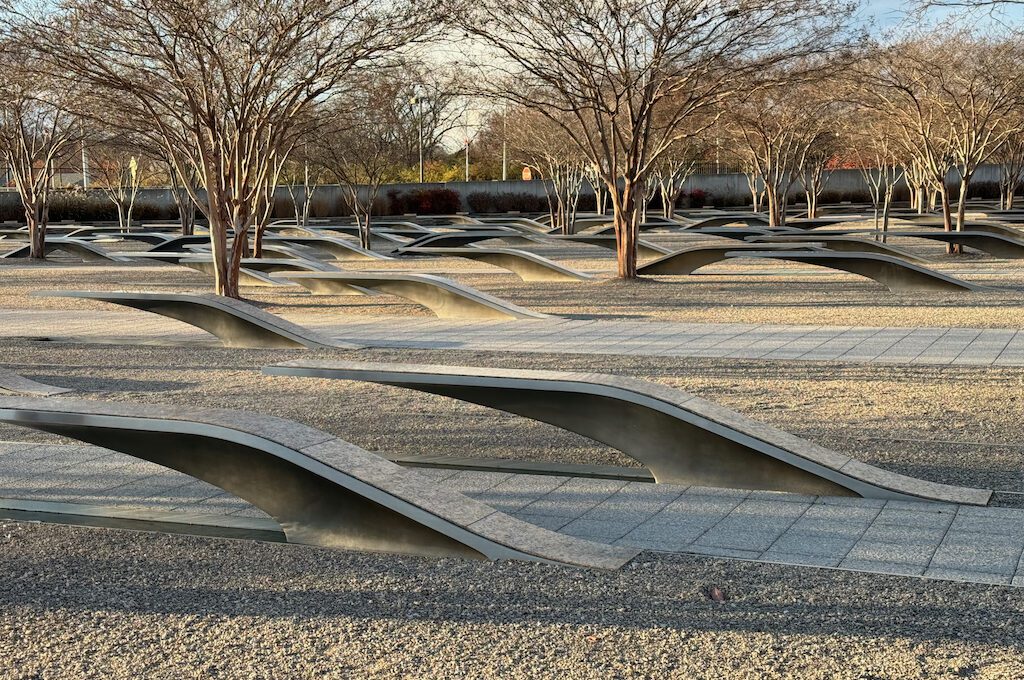
Background on the Pentagon 9/11 Memorial
Julie Beckman and Keith Kaseman, the creative minds behind the Pentagon 9/11 Memorial, emerged victorious from a pool of over 1,100 design submissions.
Their vision came to life when construction kicked off on June 15, 2006, culminating in a dedication ceremony on September 11, 2008—commemorating the seventh anniversary of the tragic events.
The symbolism woven into the Pentagon 9/11 Memorial, starting with its benches, is truly moving.
Each of the 184 illuminated benches serves as a heartfelt tribute to an individual victim of the attack.
When reading the names on the benches, if you are facing the Pentagon that means that individual was within the Pentagon at the time of the attack and if you’re facing away from the Pentagon, that means that individual was aboard Flight American Airlines Flight 77.
A gentle, illuminated pool of flowing water graces each memorial bench, its fountains casting a shimmering glow in the night.
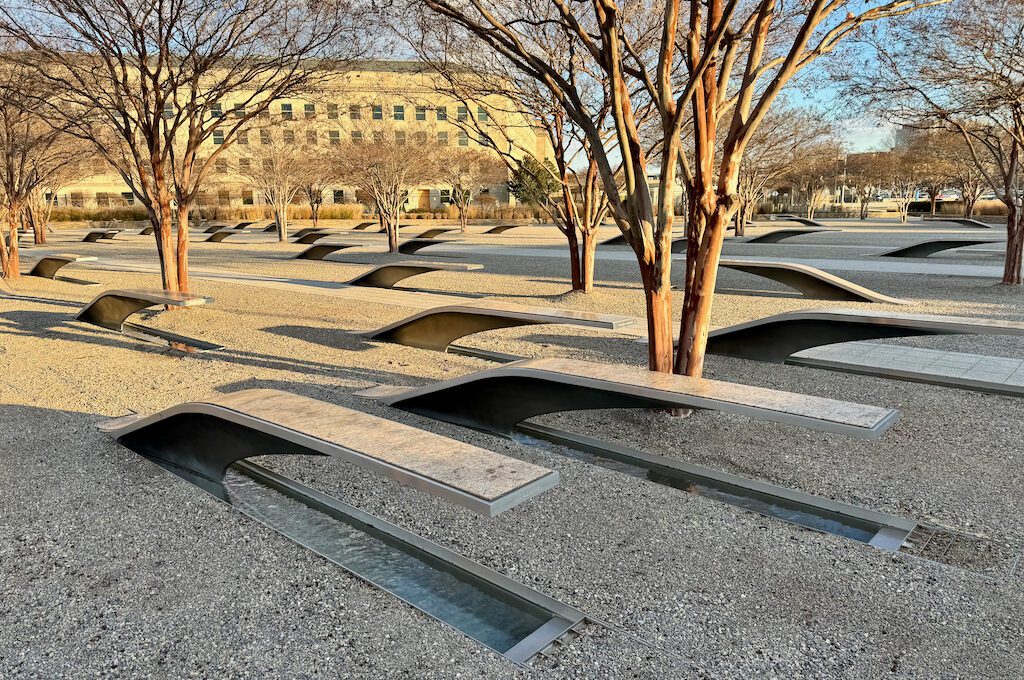
In cases where multiple family members passed away, the names etched on the benches tie family members together, ensuring their connection is not lost amid the multitude of engraved names.
What’s especially thoughtful is the arrangement of benches by birth year, from 3-year-old Dana Falkenberg to 71-year-old John Yamnicky Sr. This not only facilitates easy location of specific names but also underscores the diverse life experiences of the victims.
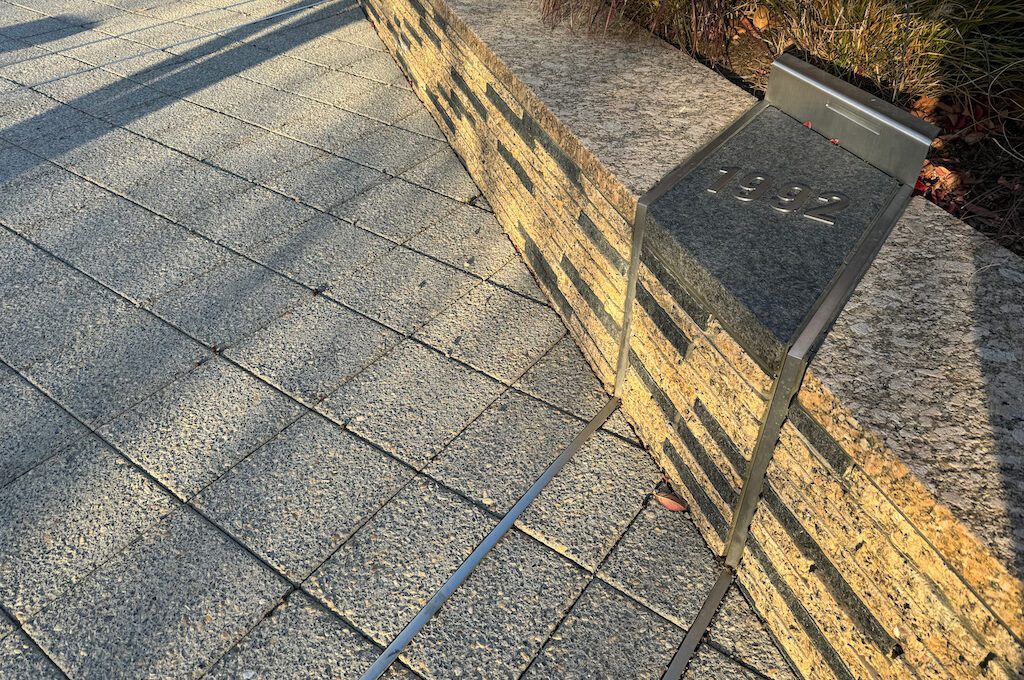
A bench along the memorial is accompanied by a wall, ranging from 3 inches to 71 in height—a subtle yet powerful representation of the victims’ age range. You can see the high end of the wall below, and the lower portion of the wall in the image below that one.
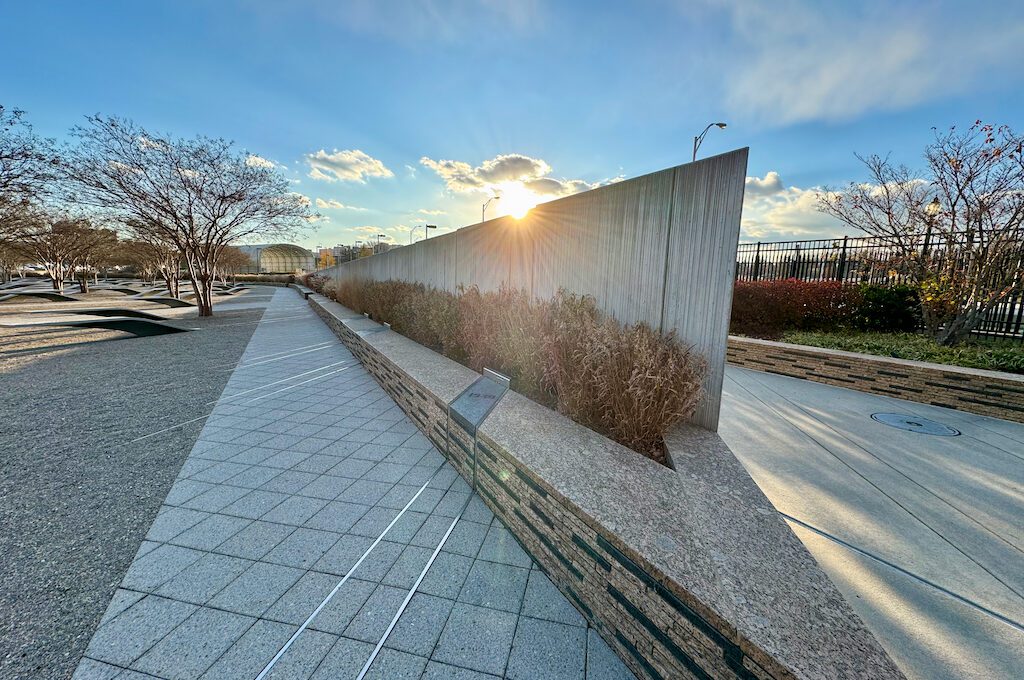
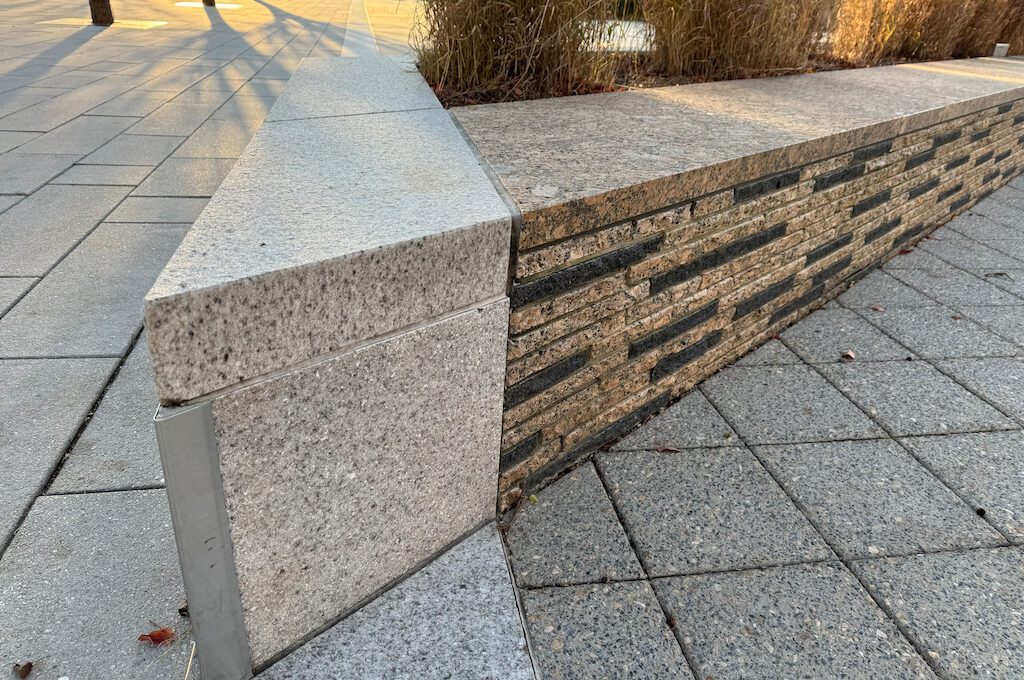
Plans for an education center at the Pentagon Memorial are set to materialize by 2026, just in time for the 25th anniversary of 9/11. This center aims to offer a comprehensive understanding of the events surrounding that fateful day.
But for now, there’s an engaging audio tour available. You have the option of a 25-minute or a more concise 12-minute version; simply dial the provided phone number to embark on the journey.
The tour kicks off at the distinctive black entry stone of the Pentagon Memorial, guiding you through key points of interest and delivering a rich history of the Pentagon.
Through the audio tour, you gain a sense of what the day was like at the time of the attack, hear from survivors, and also get some background on the Pentagon itself.
One notable highlight that the audio tour will point out is the original charred black stone, situated at the Pentagon’s base and reset into the foundation. You can look for it between the age lines denoting the years 1959 and 1961.
How to visit the memorial
The memorial is open every day of the year and is open 24 hours.
Getting to the memorial is a little bit tricky when you are driving your own vehicle because there is no on-site parking.
We opted to park at the Fashion Centre at Pentagon City and use the two hour metered parking as we were going to get something to eat afterwards.
If you opt for public transportation, you can take the Metrorail to the Pentagon or Pentagon City stops on the Blue and Yellow lines, and it’s a short walk from there.
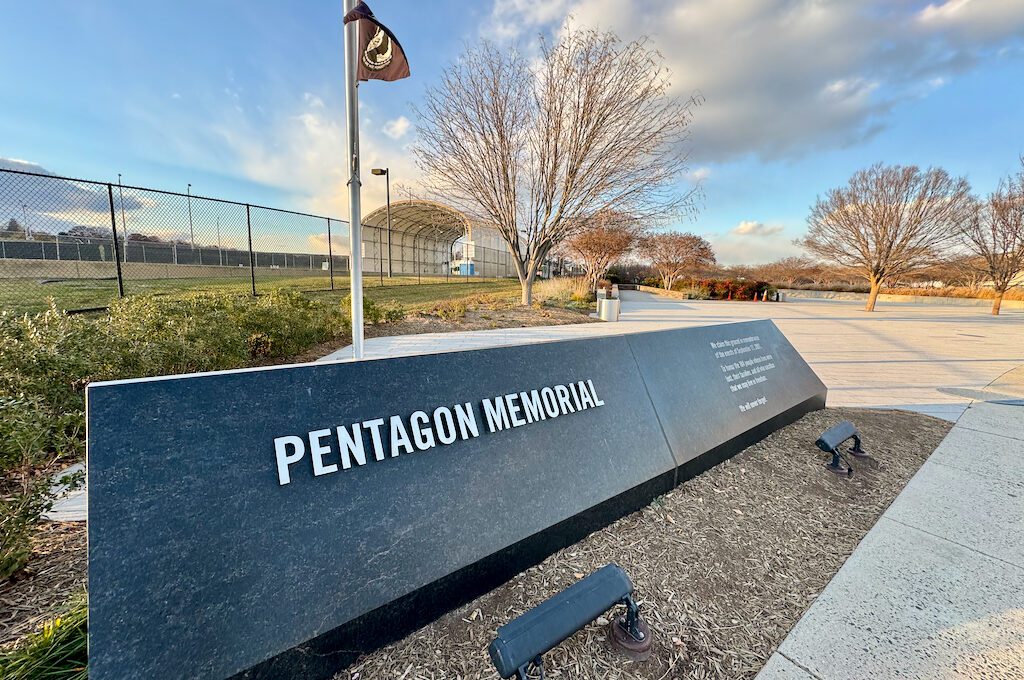
Our experience at the memorial
Our journey began as we made our way from the parking lot and navigated a tunnel beneath the I-395 highway on an exceptionally chilly day. The temperatures lingered in the low 30s, and the winds, quite gusty, greeted us with determination
As we followed the signs leading to the memorial, it became apparent that we were the lone souls heading towards the Pentagon. The majority seemed to be streaming away from the brisk weather, likely escaping the elements after a day of work.
A minor disappointment hit when I noticed a sign prohibiting photos on the Pentagon’s premises, thwarting my initial plans to capture the memorial. Undeterred, we pressed on, and to my delight, a sign later revealed that photography was allowed within the memorial itself.
Upon reaching the entrance marker, you’ll be greeted by the inscribed words:
“We claim this ground in remembrance of the events of September 11, 2001, to honor the 184 people whose lives were lost, their families, and all who sacrifice that we may live in freedom. We will never forget.”
This is an opportune moment to kick off the audio tour, setting the tone for your experience.
Just beyond the entrance marker, you’ll encounter a stone that pays homage to the diverse array of victims—from students to doctors—underscoring the wide spectrum of lives affected by the tragedy. It serves as a point of remembrance before delving deeper.
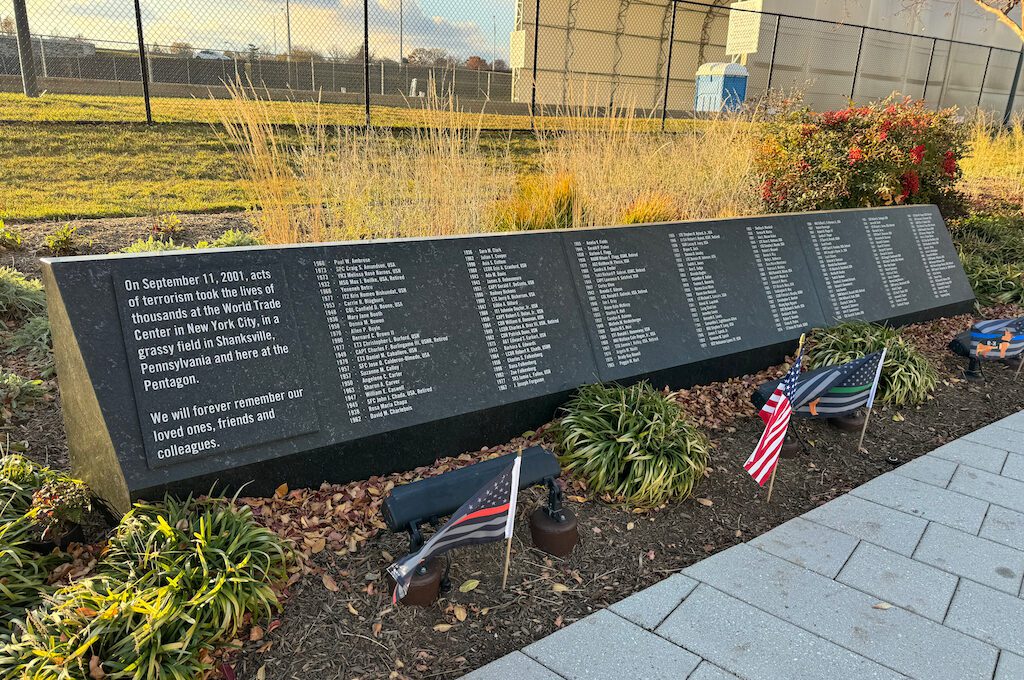
As you step inside, the first bench you encounter is dedicated to three-year-old Dana Falkenberg who, along with her entire family, tragically lost her life. You may see little toys placed on her bench and it is about as poignant a moment as you can ever have so be prepared for it.
Feel free to meander through the memorial at your own pace, though I’d suggest tagging along with the audio tour initially. It provides a structured glimpse into a portion of the memorial before granting you the freedom to explore independently.
Our visit unfolded in solitude, with the entire memorial echoing the expected emptiness brought on by the harsh weather. The bitter chill in the air intensified the experience as we wandered through the expansive two acres, surrounded only by dormant trees and vacant benches.
Memorials of this nature, like the USS Oklahoma Memorial, where lots of individual structures symbolize the multitude of lives lost, have a way of evoking a profound sense of tragedy.
Walking among them, the overwhelming mix of emotions is hard to escape—sadness, horror, and even anger. Anger at those who planned and carried out these attacks. Anger at those who celebrated these attacks in their streets. Anger at senseless suffering.
Yet, amid the weight of these emotions, there exists a serene tranquility here.
The gentle trickle of water and the thoughtful design provide a sense of peace, offering a counterbalance to the intense feelings that such memorials inevitably stir. It imparts a certain level of order to the disorder inherent in recounting the events of September 11th.
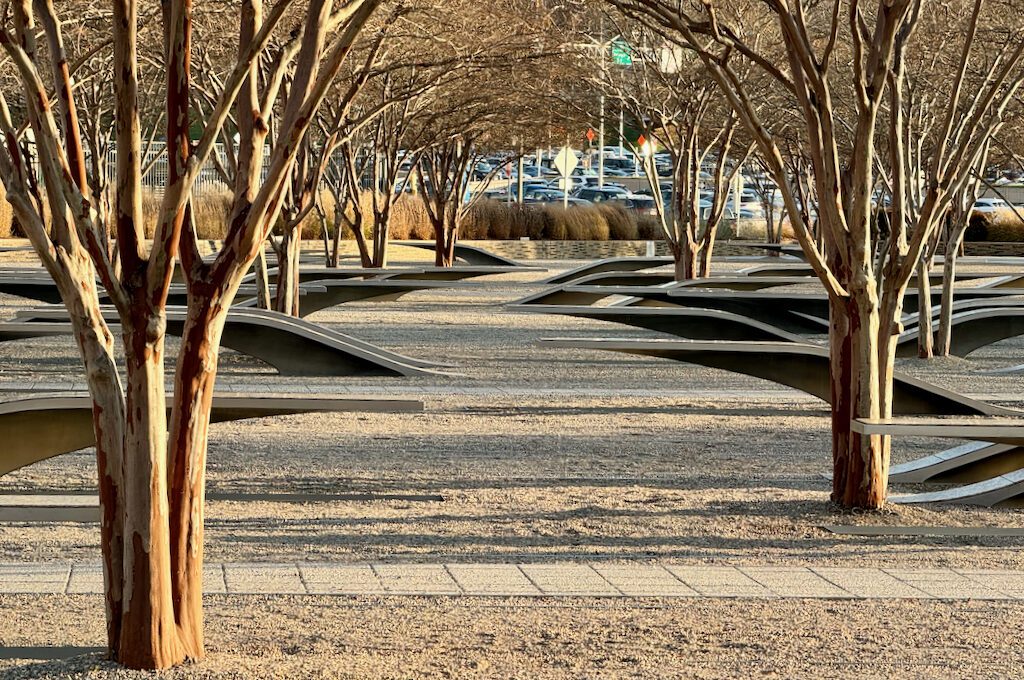
One aspect that sets this 9/11 memorial apart from all of the others I’ve visited is the stark fact that the structure targeted in the attack, the Pentagon, looms wide over the memorial itself.
It’s a striking visual reminder that life continues, even in the aftermath of tragedy, and yet, we can honor and remember those we lost in the process. Both resilience and remembrance are exuded at their finest.
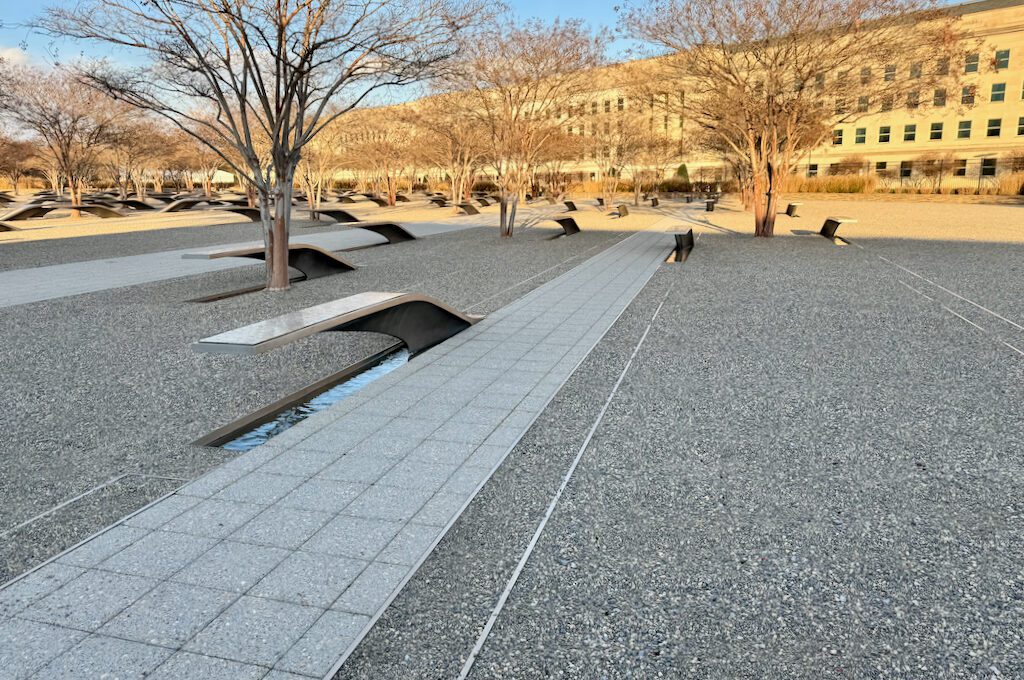
As the relentless wind numbed my hands and face we decided it was time to retreat, capping off an emotionally charged and weather-beaten visit to this significant site.
Final word
Navigating the intricate details of September 11 can lead one down a rabbit hole of emotions and memories, even for those without personal connections to the direct victims. The weight of that day, its profound impact on countless lives, and the collective grief it stirred can cast shadows into personal reflections.
Despite not having direct ties to those who suffered, a sense of duty and respect draws many, including myself, to visit these memorial sites. It’s a way of acknowledging and honoring the profound suffering endured by others—perhaps even more deeply than one’s individual experience might suggest.
The act of paying respects becomes a bridge connecting personal empathy to the shared grief of a nation. It’s a testament to the enduring impact of that tragic day and the collective responsibility we feel to remember and honor the lives forever changed.
Daniel Gillaspia is the Founder of UponArriving.com and the credit card app, WalletFlo. He is a former attorney turned travel expert covering destinations along with TSA, airline, and hotel policies. Since 2014, his content has been featured in publications such as National Geographic, Smithsonian Magazine, and CNBC. Read my bio.

